The Charles W. Morgan came back to life this spring.
The last American wooden whaling ship once again had saltwater under her 173-year-old keel. Ocean winds buffeted her new suit of sails. She has another captain and a new crew occupying bunks and climbing the rigging.
When the Charles W. Morgan first launched on a summer day in New Bedford in 1841, there was nothing particularly special about her. By all accounts she was a fine wooden ship, but just one of 2,700 ships that made up the American whaling fleet, working ships built to travel the world in search of whales and come back home with gallon upon gallon of precious whale oil.
But as the whaling industry declined and her sister ships were wrecked, scrapped, or the victims of Confederate raiders or Arctic ice, the Morgan secured her place in history just by surviving. Because of luck, the skill of her sailors and the efforts of those who cared about her, she alone remains to tell the story of America’s whaling era.
After a massive restoration effort at Mystic Seaport, the Charles W. Morgan is again seaworthy and embarking this summer on her 38th voyage. She once dropped anchor in Peru, South Africa, Hawaii and Japan. This time her ports of call will be local and weighted with history: New Bedford, where she was built; Provincetown and Stellwagen Bank, where whales, once hunted, are now protected and admired; and Martha’s Vineyard, home to many of the Morgan’s captains and crew members.
The Morgan’s story is also one of restoration, revival and serendipity.
“In so many ways it seems as if she’s the perfect one to have survived,” Morgan historian Matthew Stackpole said. “She reflects so accurately so many parts of the story.
“It seems almost as if it was her destiny to be the only one left to tell the story. As I’ve looked at her and gotten to know her better, I keep saying to myself what a perfect portal, a perfect vehicle for the whole story she is.”
...
The story begins with the American whaling industry, which was at its peak when the Charles W. Morgan was commissioned in 1841. Whaling was a lucrative business; whale oil was prized as a lubricant for machinery and as an illuminant for lighthouses and lanterns in the days before electricity. Sperm whale oil, a higher quality and therefore more valuable oil, was especially prized, as it did not change viscosity with changes in temperature. Spermaceti, a waxy substance found in the head cavity of sperm whales, was also valuable for making candles and as fuel for lamps.

Whaling ships also carried home baleen, or whale bone, which was used in the days before plastic for corset stays, buggy whips and other things.
American whaling ships sailed on 14,864 voyages as part of an industry that lasted more than 250 years. Money from whaling fueled America’s fledgling economy, leading to the rise of railroads, westward expansion and the Industrial Revolution. In 1853, the industry’s most profitable year, the sale of whale product totalled about $11 million.
But to get the oil one needed to kill whales, and to get the whales, one needed a whaling ship.
...
Charles Waln Morgan was a businessman whose small empire showed the broad reach of the whaling industry. Born in Philadelphia and raised as a Quaker, Mr. Morgan became a Unitarian and settled in New Bedford, where he was involved in the abolition movement. He operated a candleworks that made spermaceti candles, and he had a contract to supply sperm oil to lighthouses. His investments included textile mills, railroads, banks and a paper mill.
Over the course of his career, he also owned or managed more than a dozen whaling vessels.
From the beginning, the ship that would become Mr. Morgan’s namesake had a Vineyard connection. The new ship was built at the New Bedford shipyard of Jethro and Zachariah Hillman, descendents of a prominent Chilmark family.
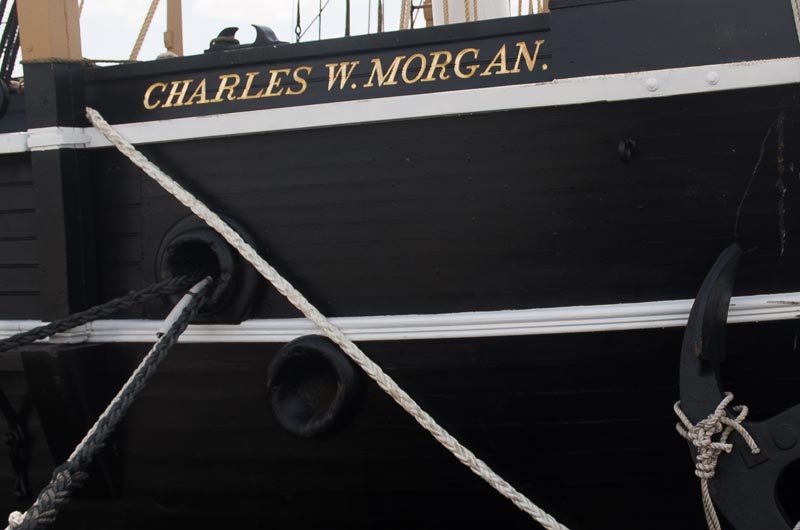
Workers at the J&Z Hillman Shipyard laid the keel of the new ship in December 1840. Work on the new boat was delayed by about a month because of a strike; some of the 31 men who worked on the Morgan were demanding a 10-hour work day. The strike came to an end with a compromise of 10 and a half hours.
It cost a little more than $50,000 to build and outfit the Charles W. Morgan, a square-rigged ship with two decks, three masts and a full suit of sails. She had a rounded bow, and at her first launch, she was painted with false gunports to ward off potential pirates. She was built of live oak and yellow oak, and weighed in at 351 tons. She was more than 105 feet long, 27 feet-six inches in breadth, and 17 feet-six inches deep. Her main mast rose 110 feet above the deck.
Mr. Morgan had nothing to do with the decision to bestow the new vessel with his name. His nephew Samuel Griffitts Morgan named the ship in his uncle’s absence. “I don’t altogether like it,” Mr. Morgan wrote in his diary.
On July 21, 1841, the Morgan was launched. “A fine warm day but very dry. This morning at 10 o’clock my elegant new ship was launched beautifully from Messrs. Hillman’s yard — and in the presence of both half the town and a great show of ladies,” Mr. Morgan wrote in his journal. “She looks beautifully on the water. She was copper-bottomed on the stocks. She is to be commanded by Captain Thomas Norton.”
...
Captain Norton was from the Vineyard — he hailed from Edgartown and is buried at the Westside Cemetery there. When the Charles W. Morgan departed on Sept. 6, 1841 for her first whaling voyage, the crew was full of fellow Vineyarders. Four members of the crew went on to become whaling captains themselves.

“When the Morgan slipped out into the Atlantic on that September morning the last land to be seen astern was the green hills of Martha’s Vineyard,” Edouard Stackpole wrote in his 1967 book Charles W. Morgan. “A score of the crew stood for some time along the rail, watching the Island’s shore drop out of sight. There was more to their gazes than the look of sailors observing a last landfall. Besides her captain, seventeen of the complement of thirty men were natives of the Vineyard, and one of them, James C. Osborn, was to keep the only known record.”
Mr. Osborn, the second mate, kept a detailed log of the trip, an account that has been preserved. “Journal of a voyage to the Pacific Ocean, in ship Chas. W. Morgan,” the log begins. “May kind Neptune protect us with pleasant gales, and may we be successful in catching sperm whales.”
While whaling ships did sail to and from the Vineyard, the Island was a quieter whaling port than New Bedford and Nantucket. The Morgan never sailed to or from the Vineyard. The Vineyard connection to the Morgan comes down to people. “The Vineyard provided the captains and crews,” Mr. Stackpole said. Seven of the Morgan’s 21 captains were from the Vineyard.
The Morgan had just passed Cape Horn when she took her first whale on Dec. 13, 1841. The first voyage ended up lasting three years, three months and 27 days; she brought home cargo valued at $53,052.56.
Whaling ships hoped for “greasy luck” to bring them successful trips. The Morgan seemed to have it.
...
Over 80 years, the Morgan would embark on 37 voyages. The crew and ownership changed over time, as did her home port.
Charles W. Morgan himself would only own part of the Morgan for her first two voyages; he sold his namesake ship to Edward Mott Robinson in 1849. A few years later, he regretted his decision and asked to buy the vessel back, saying he wanted to leave it for his family. He apparently could not find a comparable ship to exchange for the Morgan and never owned her again. Mr. Morgan died in 1861; his name clearly lives on.
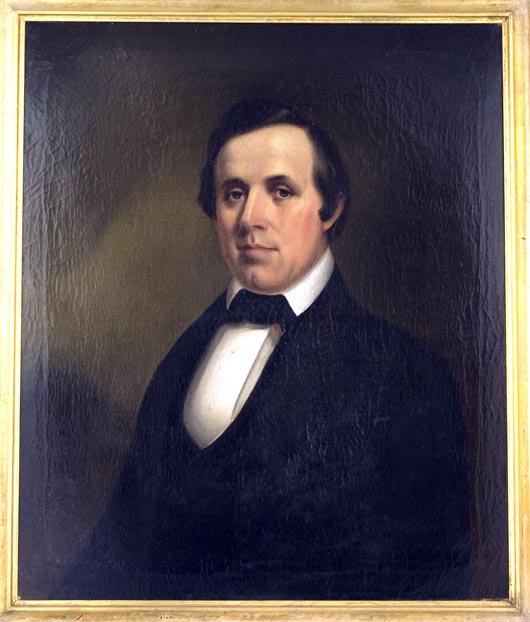
Beginning in 1863, the Morgan was owned by J. & W. R. Wing, a New Bedford company that grew to control the largest fleet of American whale ships. The Wing company owned the Morgan for 27 of her 37 voyages. In the latter part of the 19th century, whaling was on the decline. With oil discovered in Pennsylvania in 1859, reliance on whale oil subsided. The sperm whale species was also suffering from years of whaling, and focus shifted to bowhead and right whales. Baleen became the prized quarry, and in later years the Morgan also hunted elephant seals for their blubber.
With the new emphasis on baleen, ships headed to whaling grounds in the Pacific Ocean. Many whaling ships, including the Morgan, changed their home ports to San Francisco. In 1886, the Morgan shipped from New Bedford, not to return for nearly 20 years.
While many ships were wrecked or otherwise destroyed during routine voyages, whaling ships suffered a variety of fates in the late 1800s. In 1871, more than 30 whaling ships were trapped in or crushed by ice off Alaska. Others, including several ships out of Edgartown, were sunk during the Civil War by the Confederate raiders Shenandoah and Alabama.
After 37 voyages totalling more than 60 years spent at sea, the Morgan left on her last whaling trip in September 1920. She returned to Provincetown on May 28, 1921 with a cargo valued at $25,533.90. All told, she brought in 54,483 barrels of whale oil and 152,934 pounds of whale bone over her career.
“She starts out at the most profitable two decades of whaling under sail and literally sails to the end of the industry in America,” Mr. Stackpole said.
Her whaling career continued — on the silver screen when the Morgan had another brief career as a movie star. In 1916, she was in the silent film Miss Petticoats. In 1921 she briefly returned to being a full-rigged ship for a turn in Down to the Sea in Ships, a silent film starring a young Clara Bow. She was sailed to Salem for the movie Java Head.
She later returned to New Bedford, where Harry Neyland, a New Bedford marine artist, began a campaign to save her. He formed the organization Whaling Enshrined Inc. to raise money for her restoration, turning to the city of New Bedford for help with no success.
The Morgan found a savior in Col. Edward H.R. Green. He was the son of Henrietta (Hetty) Green, nicknamed the Witch of Wall Street for her investment prowess and famous frugality. Colonel Green was also the grandson of Edward (Black Hawk) Robinson, the principal owner of the Morgan from 1849 to 1859.

Mr. Neyland appealed to Mr. Green for help. On Oct. 2, 1924, Mr. Green responded with a letter.
“I have given the matter considerable thought and have concluded that, for sentimental reasons, this particular whaler, the ‘Charles W. Morgan,’ should be preserved, not only for the pleasure that we of the present day would derive from seeing one of the ‘old timers’ still with us but as a historical heirloom for the generations to follow us,” Colonel Green wrote.
Colonel Green said he was willing to donate $500 toward preserving the ship in New Bedford. If that failed to happen by Oct. 15, he said, he was willing to take her over. Time was of the essence to make sure the boat was safely moved.
So the Charles W. Morgan ended up at Colonel Green’s South Dartmouth estate at Round Hill. She was completely refitted and put in a sand berth near a reproduction whaling-era New Bedford wharf. A crew of former whalemen were hired to stand by, and Capt. George Fred Tilton, a Martha’s Vineyard man, was hired as her captain, though she never left her sand berth.
She was visited by more than a million people during her time at Round Hill, but when Colonel Green died in 1936, he left no money for her continued maintenance. It was the Great Depression, and things looked bleak for the Morgan. She began to deteriorate, and sustained damage in the hurricane of 1938.
Carl Cutler, one of the founders of Mystic Seaport, negotiated for Mystic to take her. On Nov. 8, 1941, she was towed to Mystic by a Coast Guard cutter.
If the trip had been delayed by a month, the whole project would likely have been scrapped because of Pearl Harbor and America’s entry into World War II.
While the Morgan had found a new home, an October 1941 Gazette editorial bemoaned the development.
“. . . Nor will mighty ocean waves ever again pound, buffet, and throw her on her beam ends,” the editorial said. “Many old salts, their descendants and lovers of the sea will be saddened by this turn of the wheel of fortune, condemning her to anchor in almost a foreign port.”
But there were more turns ahead in the Morgan’s wheel of fortune, some propelling her back toward those ocean waves.
...
The Morgan went through several renovations after she arrived at Mystic in 1841, and in fact she was renovated and repaired frequently when she was in service. By 2008, about 30 per cent of the ship was original.
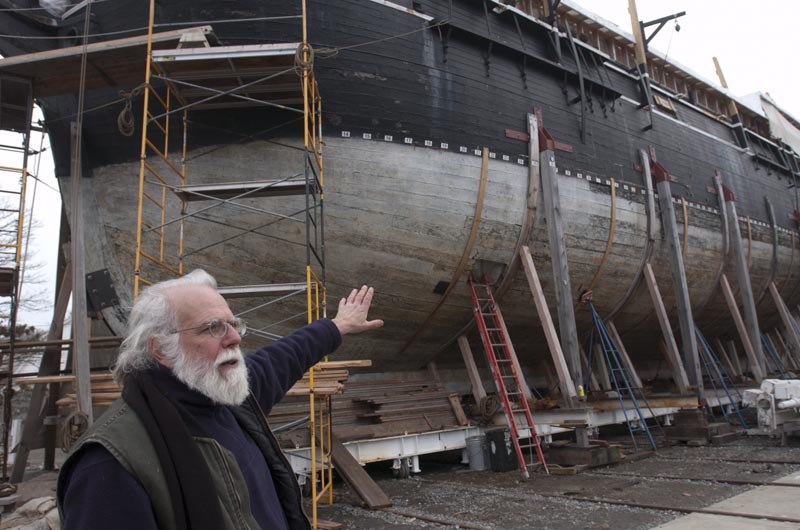
The beauty of wooden ships, Mr. Stackpole said at Mystic in late April, is that they are endlessly renewable.
Mystic embarked on a major renovation of the ship in 2008. Saltwater is a preservative, and from the waterline down the ship had not been touched, and was comparatively well-preserved.
“When planks were taken off, we were looking at something nobody had seen since the winter of 1841 . . . we were able to look at the original ship, the original construction, we could see the tool marks,” Mr. Stackpole said. The first year or so of work was like an archeological dig, with the design and the placement of the ship’s planks carefully documented. There are no original plans for the Morgan, or a record of how she was first built. “We’ve got the record now,” Mr. Stackpole said.
In 2009 the new president of Mystic Seaport, Stephen White, posed a provocative question. Why couldn’t she sail again? “If not now, when, and if not now, why,” he said, according to Mr. Stackpole.
“It totally floored all of us,” Mr. Stackpole recalled. “We were so committed to restoring the vessel.”
The Morgan was the heart and soul of Mystic, Mr. Stackpole said, and “actually taking her away was beyond any of our imaginations.”
This led to a six-month conversation and a feasibility study. Mystic decided to pursue a 38th voyage.
“It was really outside of the box,” Mr. Stackpole said. “It’s groundbreaking, or maybe waterbreaking, for any museum to take its largest artifact, to . . . really take it out and be what it was in terms of a sailing vessel was really unprecedented.”
The ship restoration cost about $8 million, and with the costs associated with the voyage and exhibits, the grand total is about $12 million, Mr. Stackpole said.
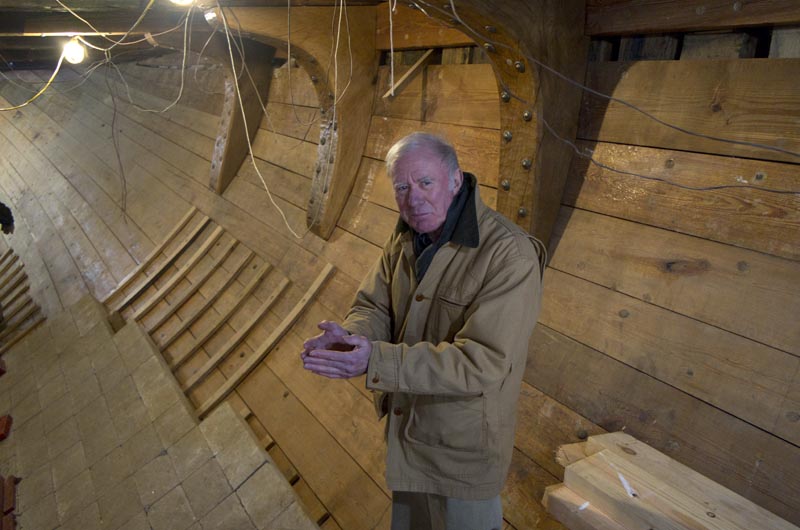
The restoration required large quantities of the right types and sizes of wood. Live oak was salvaged from trees that fell during Hurricanes Katrina and Hugo. Douglas fir from Washington state was used for the spars, white pine came from New York, and yellow pine came from Georgia and Florida.
Iron bar fasteners came from old wrought iron tiger cages at the Memphis Zoo.
In 2011, the restoration was helped along with a providential find at the Charlestown Navy Yard: 17 truck loads of antique live oak and white oak, cut for use during the tall ship era. The wood had been preserved in mud since roughly the 1860s, and some of the wood was 200 years old.
About 18 per cent of the original ship now remains. She was given about 280 new futtocks (curved timbers that form the ribs of the ship), 70 new ceiling planks and 168 new planks in the hull. In the ship’s hold, the original planks are easy to spot among the newer pieces of wood. She has her original oak keel, the one that was laid at the Hillman shipyard in 1840.
Whaleships were working ships, and the Morgan is the second oldest merchant ship in the country, second only to the U.S.S. Constitution. The Morgan’s role was to gather and store oil. “Like a current day tanker,” Mr. Stackpole said.
“This ship had it all figured out,” Mr. Stackpole said. “She represents really the pinnacle of the whaleship design.”
With the ship’s restoration and the 38th voyage, a new generation of shipwrights are learning to work on an old whaling ship, and a new captain and crew are learning how to sail her.
About 30 people worked on the ship at the peak of framing, with about 18 to 20 people working on her most of the time. The shipwrights worked under the direction of lead shipwright Rob Whalen, who coordinated the process.
“It’s sort of like working on any other wooden ship except for the fact that it’s the Morgan,” Mr. Whalen, 56, said last week.
“It puts you a lot closer to the source of everything in terms of things nautical and American,” he said. “It gives you a different perspective of all that that is kind of difficult to get from historical texts, reading or just walking the deck. You get a much more in-depth understanding of it all in doing this.”
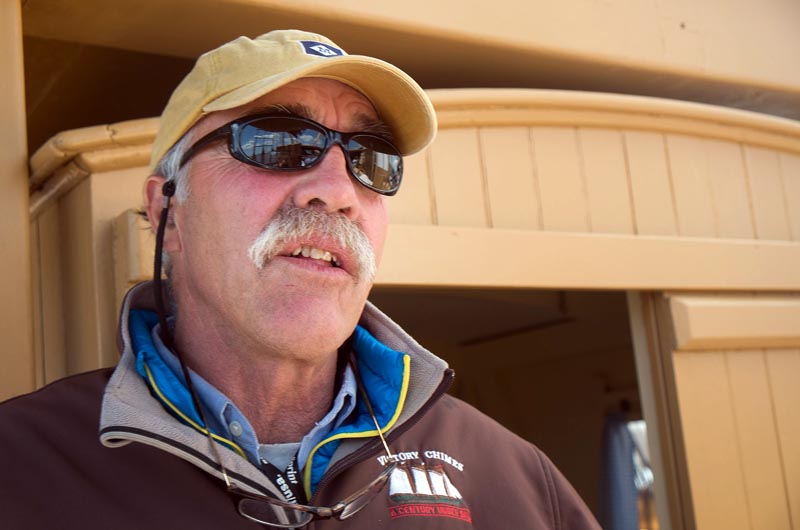
The work has paid off: Mr. Whalen was speaking by cell phone from the Morgan as she sailed on one of her sea trials. “She’s going under sail power,” he said. “She’s kinda hobbying along quite nicely. No mechanical noise.”
For many involved with the restoration and the 38th voyage, the Morgan actually sailing is the culmination of decades of work. Senior shipwright Roger Hambidge has been working on the Morgan since 1973, when he and other shipwrights removed remnants of the ship’s copper sheathing. After leaving Mystic in 2002, he came back a few years ago to help with the restoration, documenting and hand-drawing the construction and providing his knowledge of old shipwright tools.
“Here’s the thing that got me,” Mr. Hambidge, 62, said. “We pulled up all the old ceiling planking. The inside is heavy stuff, three-inch-thick yellow pine, very long and wide. We exposed all those old frames, 1841 timbers, you see some of the tool marks and stuff like that. When we pulled those out, it was the first time anybody had seen that since 1841. The last person to touch this piece is long gone. What got me is what a different world it was, no electricity, no cell phones.”
Many of the deck beams are still from 1841, and tell a story about the men who built the Morgan. “A lot of the tool marks are very, very crisp and clean, and you can actually determine if the person doing that work was right or left handed by the angle of the chopping. We could also see where patterns changed,” he said, allowing them to determine how many different people worked on each section.
While the Mystic shipwrights did use modern-day technology, an effort was made to have the last work done on each part by hand, Mr. Stackpole said. Shipwrights like Mr. Hambidge used some of the same kinds of tools that were used in 1841.
“The skill and knowledge about how to do this kind of work is being passed on to a whole new generation of shipwrights,” Mr. Stackpole said.
...

The ship has been restored to how she appeared in the years she was owned by the Wing corporation, mostly because those years are best documented with pictures. In 1867 she was re-rigged as a bark, meaning she had square sails on only two masts; that is how she will sail on her 38th voyage.
Today, she flies the Wing house flag, a white and navy blue flag with a W and a red circle. She also flies a Mystic Seaport flag emblazoned with an M.
In 1841, a gold coin was placed under the foremast for good luck. During renovations, the heel of the foremast still bore the impression of the coin.
For her 38th voyage, there are coins under each of the Morgan’s three masts: an 1841 silver dollar, representing the original launch; a 1941 silver dollar, representing the ship’s arrival at Mystic Seaport, and a 2013 silver dollar, representing the current restoration.
In May, the Morgan left Mystic for New London, where her rigging was completed and her sails were put on. In early June, the Morgan sailed again for the first time, going out on Long Island Sound for the first of several sea trials. This was the first time anyone alive had seen an American whaleship at sail.
The Morgan’s captain for the 38th voyage is Richard (Kip) Files of Rockland, Me.
“The first thing most kids say is, look at the pirate ship,” Captain Files said in May, surrounded by navigation instruments on the Morgan. He said the Morgan is here to correct that misconception. “They have no concept of how the whaling industry created and protected this country. It’s cool to tell that history.”
The thing that differentiates the Morgan from other ships is her history. “The challenge is to make sure you don’t hurt the archive,” he said.
But in other ways, “it’s a sailboat. Sails go up and sails go down,” he said. But then again, “there’s nobody alive that’s sailed a vessel like this.”
While the crew kept meticulous logs, many of which survive, “They didn’t write about all of this,” Captain Files said. “They wrote the number of barrels, the number of miles, but the sailing aspect of it” is more of a mystery, he said. “We just don’t know the character because she’s so different.”
Second mate Sean M. Bercaw, who is also the captain of the Amistad, concurred that the logbooks are cryptic. “Hove to in the usual fashion,” Mr. Bercaw recalled. “Well, what does that mean?”
“It wasn’t like they were being shady,” he added. “They all knew.”
...
There was a lot of life on the Morgan: more than 1,300 men sailed on her, as well as five captains’ wives and some of their children. As the years went by, the crews became more diverse. After stowing 1,000 pounds of oil, the crew would celebrate by frying donuts in whale oil. One Christmas, Capt. Charles Church gave each man a jar of marmalade.
There were also hard times, and even death. Several men died during voyages, some from sickness, others from drowning. Men were flogged, put in irons and they deserted. Some were certainly homesick during their long voyages.
“Physically it’s not that different from any other boat,” Cassie Sleeper, 30, a senior deckhand, said in May, seated in the blubber room as the ship was docked in New London. “When you think about it, it’s pretty cool. It’s from 1841.”
The crew was busy getting the ship ready — Ms. Sleeper said she had been aloft on the rigging twice that say already. She reflected on the Morgan in days past: “It would have smelled a lot worse, been a lot darker. There were more people around,” she said.
The Morgan is an exceptionally well-documented ship — second only to the Constitution, Mr. Stackpole said — and her story touches on many different aspects of American history.
“Certainly her cargo is indeed history and all we can learn from it,” Mr. Stackpole said. “And in this voyage she is making history. This is indeed history that is happening because of her.”
And now there’s another chapter, a 38th voyage. There will be no whales killed nor whale oil stored; in the hold, where whale oil was stored in barrels for so many journeys, boxes of soda were visible a few weeks ago. The ship has modern conveniences, and those interested can track the Morgan’s journey on the internet. There are several women on the crew.
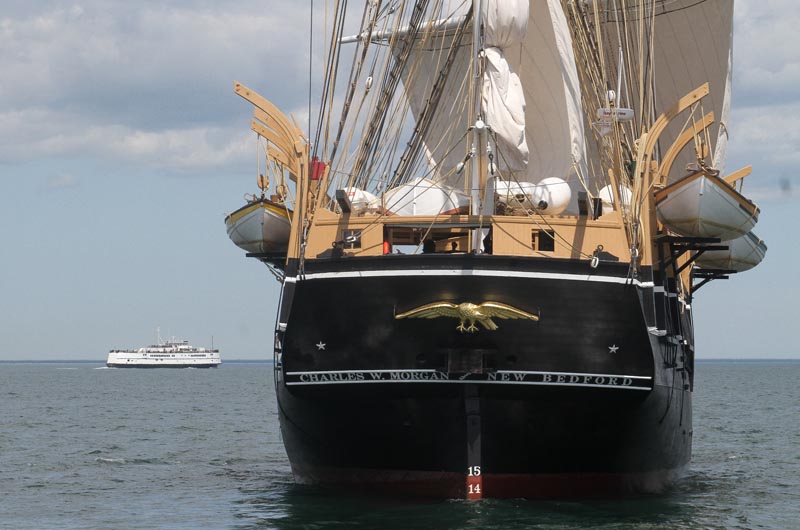
“When you’re working on an artifact, it’s still just an artifact,” Mr. Whalen, the lead shipwright, said. “The moment when it changed from that was when . . . the crew moved on board with all their bags and belongings and then what was once just an artifact is now, becomes a different thing, it takes on a different life and has vitality and aliveness that was not there before. Now kind of a living thing and not just an artifact.
“You go below now and for the five years of having worked on it, it was a dry, musty artifact. And then you climb aboard now and its got the vitality, its inhabited by human beings. Its got the trappings and the smells and all the things that come with being inhabited by people.”
“It’s a live ship now,” Mr. Hambidge, the senior shipwright, said. “She’s not dead. She’s alive.”
As the ship started to be loaded with food and the crew’s belongings, “all of a sudden something changed, something in the air changed,” Mr. Hambidge said. “What changed was this overwhelming feeling that the ship all of a sudden came alive. It was almost like she was tugging on her lines saying I want to go, I want to do this. She woke up and said hey, let’s go.”


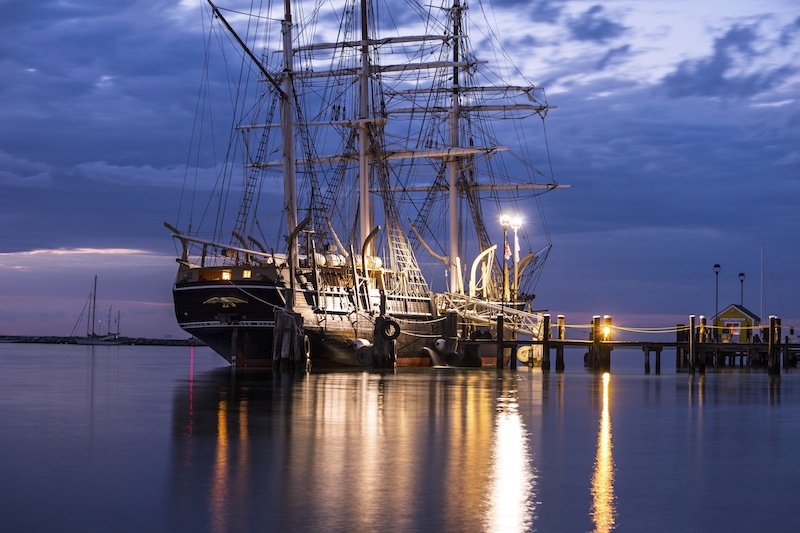
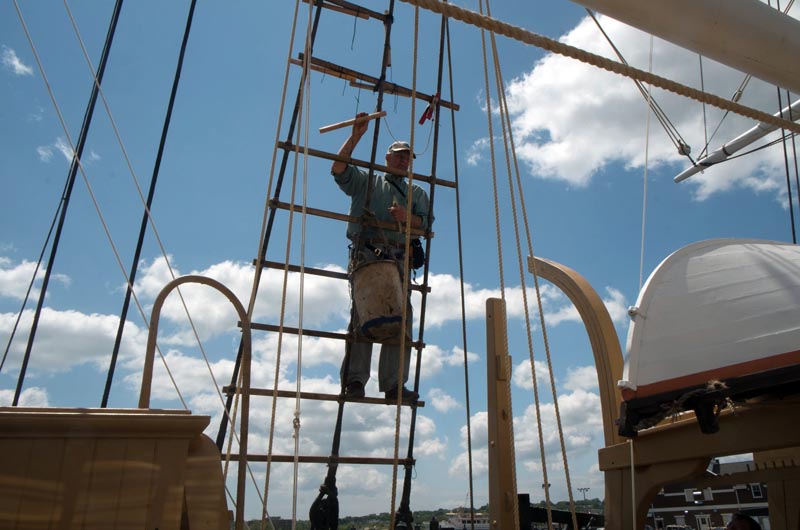





Comments (8)
Comments
Comment policy »